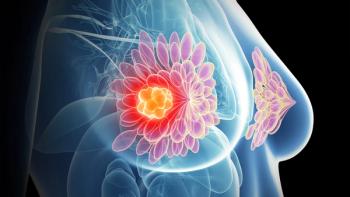
Patient-Reported Symptoms May Improve Outcomes in Cancer Care
Patients who self-reported their symptoms using a web-based system while undergoing chemotherapy had better health-related quality of life, fewer emergency room (ER) visits, remained on treatment longer, and survived longer than patients who received usual care.
Ethan Basch, MD, MSc
Patients who self-reported their symptoms using a web-based system while undergoing chemotherapy had better health-related quality of life, fewer emergency room (ER) visits, remained on treatment longer, and survived longer than patients who received usual care, according to results from a recent randomized, controlled trial.
The study, published in the Journal of Clinical Oncology, also found that health-related quality of life improved in 34% of patients using the self-reporting system, compared to 18% of patients in the control group.
“If we had developed a new drug that yielded these kinds of benefits, we would be very excited,” lead author Ethan Basch, MD, MSc, director, UNC Lineberger Cancer Outcomes Research Program, associate professor, UNC School of Medicine Division of Hematology and Oncology, said in a statement. “This randomized trial found that integrating systematic collection of patient symptoms via the web into cancer treatment improves multiple key clinical outcomes.”
Researchers evaluated the outcomes of 766 patients with metastatic cancer who were undergoing outpatient chemotherapy at Memorial Sloan Kettering Cancer Center (MSKCC) in New York between September 2007 and January 2011.
Using the online Symptom Tracking and Reporting (STAR) interface, patients graded the severity of common symptoms associated with chemotherapy, including appetite loss, constipation, cough, diarrhea, dyspnea, dysuria, fatigue, hot flashes, nausea, pain, neuropathy, and vomiting. A grade 0 indicated the symptom was not present, while a grade 4 indicated that the symptom was disabling.
Clinicians received symptom printouts at regular visits, though nurses received email alerts if symptoms worsened by 2 or more grades or reached a grade of 3 or higher.
Nurses directly intervened on more than 75% of the alerts, which included telephone counseling, changes in medication, ER or hospital referrals, treatment dosage modification, and imaging or test orders.
About a third of patients using the STAR system were admitted to the ER, compared to 41% of those in the usual care group (P = .02). Additionally, fewer patients were hospitalized during treatment (45% vs 49%; P = .08).
Patients in the intervention group also remained on chemotherapy for nearly 2 months longer than patients who did not self-report their symptoms (mean, 8.2 vs 6.3 months; P = .002).
About 75% of those who answered the patient-reported outcome questionnaires were alive after 1 year, compared to 69% of those receiving standard care.
“I would suspect that the main mechanism of action is improved awareness by clinicians of patient symptoms, which enables earlier interventions to avert downstream, untoward events,” Basch said.
“Direct patient reporting gives patients a voice—their unfiltered experience is captured and conveyed to their healthcare providers, and their perspective is not being modified by a clinician or anybody else.”
Previous research has shown that clinicians overlook up to half of patients’ symptoms during cancer treatment, and the authors conclude that self-reporting symptoms may improve symptom management and outcomes of care.
“While this study wasn’t designed to evaluate the mechanism of why we saw these improvements, we can hypothesize that by flagging symptoms that clinicians would otherwise miss, we enable earlier symptom management that avoids downstream events like pain crisis, dehydration, or intractable nausea,” Basch said.
An additional ongoing trial using similar software was launched by UNC Lineberger researchers to investigate whether self-reported practices can reduce symptom burden in adult patients receiving high does of chemotherapy as part of bone marrow transplantation.
The team is led by William Wood, MD, assistant professor, UNC School of Medicine Division of Hematology and Oncology.
“We hope to extend the findings from Dr. Basch and colleagues to the inpatient setting at the N.C. Cancer Hospital for patients who are critically ill, and experiencing high amounts of symptomatic toxicity,” Wood said in a statement. “We believe that a standardized and comprehensive view of the breadth and depth of patient-reported symptoms will enable health care providers to make rational, informed decisions that will improve the patient experience and positively affect long-term outcomes.”
Basch E, Deal AM, Kris MG, et al. Symptom monitoring with patient-reported outcomes during routine cancer treatment: A randomized controlled trial [published online ahead of print December 7, 2015]. J Clin Oncol.
Newsletter
Knowledge is power. Don’t miss the most recent breakthroughs in cancer care.
















































































